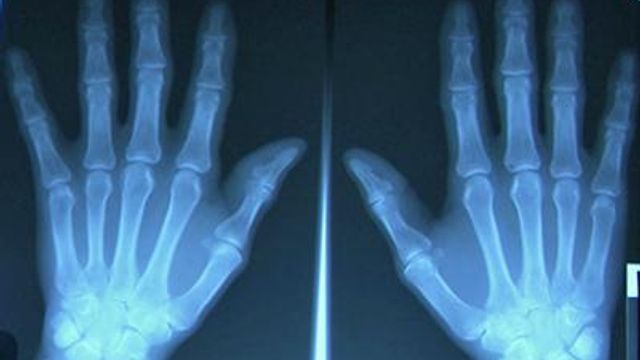Health Team
UNC researchers study osteoarthritis links
Two new studies have found a possible environmental link to osteoarthritis and differences in how it appears in African-Americans.
Posted — UpdatedSMITHFIELD, N.C. — The University of North Carolina’s Thurston Arthritis Research Center has spent the past 20 years gathering data on people in Johnston County. Two new studies released by the center have found a possible environmental link to osteoarthritis and differences in how it appears in African-Americans.
Osteoarthritis, the most common form of arthritis, occurs when cartilage in joints wear down over time, according to the Mayo Clinic. The disease commonly affects joints in the hands, hips, knees and spine. It is commonly seen in obese people.
Osteoarthritis gradually worsens over time. No cure exists.
UNC researchers found African-Americans were less likely than others to develop osteoarthritis in the hands. If the disease is found in the hands, doctors suspect problems in other joints.
“If you do it that way in African-Americans, you're going to miss a lot of people who really have multi-joint involvement,” UNC rheumatology fellow Dr. Amanda Nelson said. The result would be people not getting timely therapy.
Researchers also found patients with higher lead levels in the blood were among those most likely to develop severe osteoarthritis. Lead used to be found in many commonly used products until regulations in the early 1970s removed lead from products like canned goods, water pipes, leaded gasoline and house paint.
“Once you’re exposed, it goes into your bone and it stays there. So lead affects bones. We’re starting to get some information that it may affect joints as well, and that’s totally new uncharted territory,” the center's director, Dr. Joanne Jordan, said.
Jordan said that though the lead levels researchers found are not currently considered toxic, the metal still may be contributing to the development of osteoarthritis. She said further studies are needed before doctors can recommend special screening or monitoring of blood lead levels.
Robert Atkinson, 69, joined UNC’s Johnston County osteoarthritis project 15 years ago when he had the first signs of the disease.
“I've had to slow down some and call upon the assistance of my wife more than I used to,” Atkinson said.
Exams every five years found osteoarthritis progressing in Atkinson's feet, knees, hips and hands.
• Credits
Copyright 2024 by Capitol Broadcasting Company. All rights reserved. This material may not be published, broadcast, rewritten or redistributed.





